My Bookings
Please Enter Your Booking Code To Find Your Booked Tour!

Biodôme Montréal Guide + Tips
Keep Exploring

Niagara to Montreal: Exclusive Tour Package of Niagara Falls, Toronto and Montreal
$2199

Niagara to Montreal: Exclusive Tour Package of Niagara Falls, Toronto and Montreal
$2199

Niagara to Montreal: Exclusive Tour Package of Niagara Falls, Toronto and Montreal
$2199
Table of Contents
Nestled in the heart of Olympic Park in Montreal, the Montreal Biodôme is a captivating blend of natural wonders and educational experiences. Originally built for the 1976 Olympics as a velodrome, it was transformed into a biodome and reopened in 1992. Today, it stands as a testament to the importance of conservation and education, offering visitors a chance to explore diverse ecosystems under one roof. This guide will provide you with essential information and tips to make the most of your visit to the Biodôme de Montréal!
Explore the Top Hotspots of Montreal on a Small Group Tour!
How Long Should I Spend at the Biodôme in Montreal?
When planning your visit to the Montreal Biodôme, it's recommended to allocate at least 2 to 3 hours to fully explore its wonders. The Biodôme houses five distinct ecosystems, each with its unique array of plants and animals. From the lush Tropical Rainforest, teeming with life, to the icy Sub-Antarctic Islands, home to penguins, there's much to see and experience.
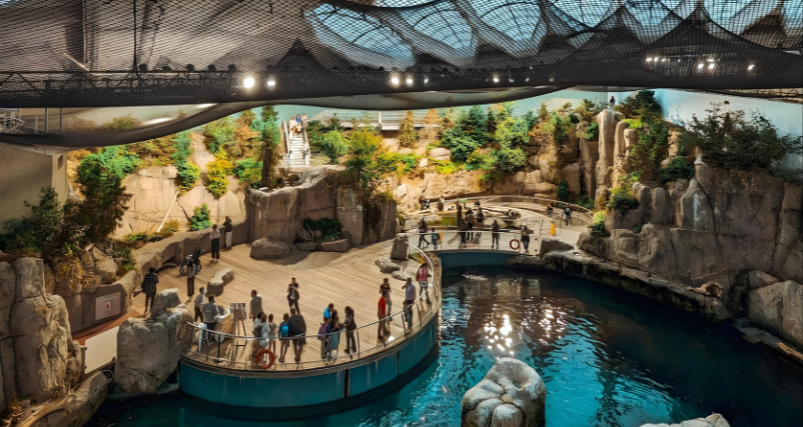
Photo Credit:Zitesh Kaushal / Unsplash
Taking your time to walk through the exhibits allows you to appreciate the intricate details and the efforts put into recreating these environments. You might find yourself captivated by the playful antics of the golden lion tamarin or mesmerized by the diverse plant species in the Laurentian Maple Forest. Also, educational displays and interactive exhibits provide a deeper understanding of the ecosystems, making it an enriching experience for visitors of all ages.
Is the Biodôme in Montreal Worth It?
Absolutely, the Biodôme in Montreal is well worth a visit. Not only does it offer a unique opportunity to experience different climates and habitats in one location, but it also provides a memorable educational experience. Each ecosystem is meticulously designed to mimic real-life environments, complete with indigenous flora and fauna.
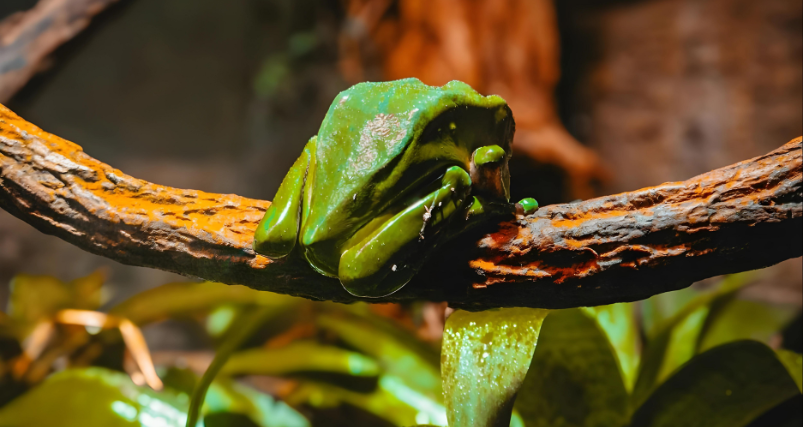
Photo Credit:Amaury TRAVER / Unsplash
Visitors can observe the vibrant Gulf of St. Lawrence marine life, encounter the elusive tamarin monkey in the rainforest, and marvel at the resilient plant species of the Labrador Coast. The Biodôme is also a part of Montreal's Space for Life, a collective that includes the Montreal Botanical Garden, the Biosphere, Insectarium, and Planetarium, all within walking distance. This makes it an integral part of any educational and fun-filled trip to Montreal.
How to Dress for the Biodôme?
Because the indoor climate varies significantly between ecosystems, from the warm and humid Tropical Rainforest to the cool and dry Polar Regions, you may want to dress in layers. But it's best to wear your cotton T-shirt to the Biodôme, and pack a jacket or a sweater (make sure that you don't carry a lot of stuff since you'll have to walk through all the ecosystems). Comfortable walking shoes are essential, as you will be on your feet exploring the different exhibits.
For the Tropical Rainforest, lightweight clothing will help you stay cool. When you transition to the colder Antarctic Islands, wear your jacket to keep warm. Also, the Biodôme encourages sustainable practices, so bringing a reusable water bottle is a good idea to stay hydrated as you explore.
Exploring the Ecosystems
Tropical Rainforest:
This ecosystem simulates the lush, humid environment of South American rainforests. You'll see diverse animal species such as the golden lion tamarin, capybaras, striped tiger catfish, black-finned brycons, and parrots. The plant life here is just as exotic and mesmerizing. See the tree branches transformed into lush gardens by epiphytes. There are strangler fig trees which look straight out of folktales; and creepers which will catch you off guard! The dense foliage and vibrant wildlife create an immersive experience that will transport you to another realm.
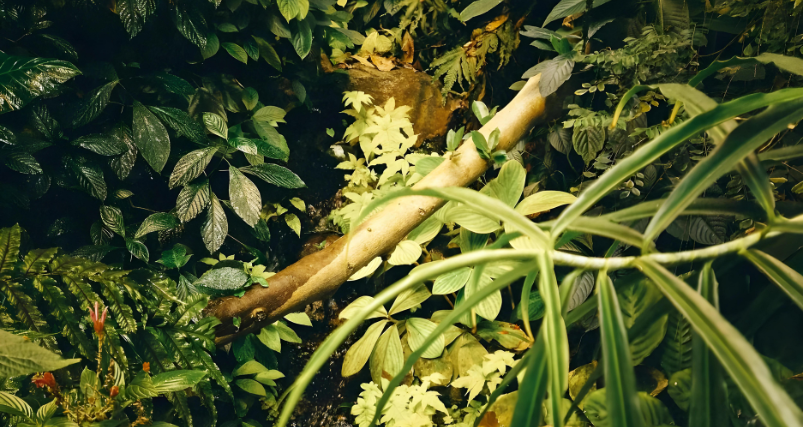
Photo Credit:Amaury TRAVER / Unsplash
Laurentian Maple Forest:
Representing Quebec's deciduous forests, this ecosystem showcases the changing seasons and diverse plant life of the region. Take in the delightful antics of river otters diving in the water, a lynx sunbathing on a rock, and porcupines crowning the lush trees. You'll see a beaver pond, a swamp, a mountain stream, and a myriad of sugar maple, yellow birch, white spruce, and fir trees. Witness a change in seasons here as you learn about local flora and fauna and the importance of forest conservation.
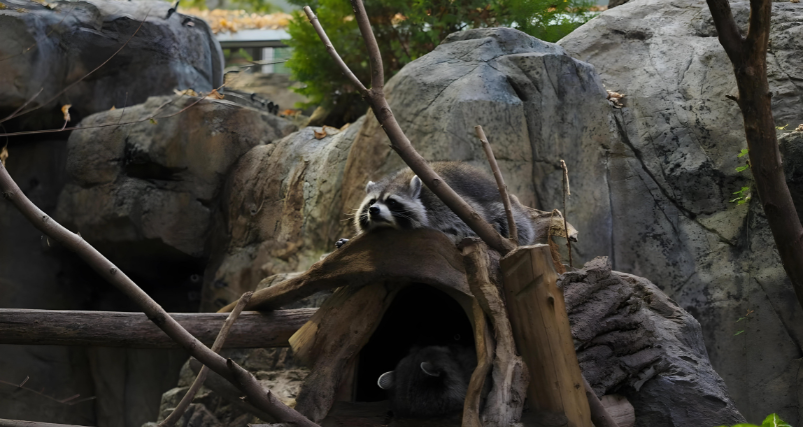
Photo Credit:Shino Nakamura / Unsplash
Gulf of St. Lawrence:
This marine ecosystem features the rich biodiversity of the Gulf, including fish, crustaceans, and plant species. Explore the richness of a coastal marsh and steep cliffs amidst the piercing cries of seagulls and the gaiety of salt-soaked air. Uncover beautiful species of invertebrates and inhabiting the bottom of the rocky shoreline. In this ecosystem, you can also take in the motley of starfish, sea cucumbers, waved whelks, sea urchins, anemones, and crabs; or see the gorgeous flora from sharp-petalled iris and sand ryegrass to Scotch lovage.
Labrador Coast:
Highlighting the rugged beauty of Canada's northern shores, the Labrador Coast exhibit features arctic plants and animals. Observe the seabirds such as murres and puffins of the Alcidae family and learn about the challenges these species face in their harsh environment. Come and visit this ecosystem in the summer to escape the heatwave and stroll through a coastal landscape where temperatures stay between 12ºC and 15ºC all year round!
The Sub-Antarctic Islands:
Experience winter in the midst of July in the Sub-Antarctic Islands where the average temperature ranges from 2°C to 5°C. This icy habitat is home to penguins and other polar species. The chilled environment and informative displays offer insights into the lives of animals adapted to extreme cold. Immerse yourself in the polar cold by walking through the ice tunnel of this ecosystem, and observe the rock formation in basalt—there’s so much to see and do here!
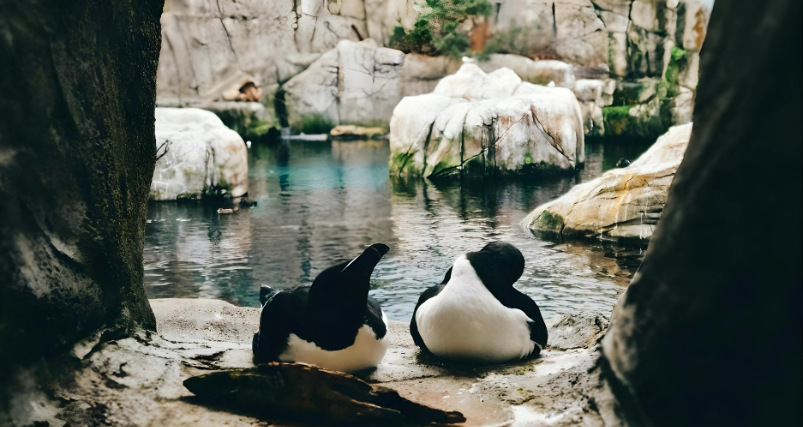
Photo Credit:Amaury TRAVER / Unsplash
Tips for Visiting the Biodôme
- The Biodôme is usually swarming with children who have come to visit the attraction with their family, or on class field trips. If you want a quieter experience, make sure to visit on the weekends!
- For those with babies, make sure to bring an umbrella stroller or a baby carrier so you can move through the Biodôme’s walkways easily.
- There's usually heavy traffic around the Olympic, so public transit is your best bet at getting to the Biodôme quickly.
- For best experience, download the free mobile application to be ready for Biodôme’s exploration. Haven't got a compatible device? Don't worry as the Friends of the Biodôme counter provides iPods that you can borrow free of charge!
- Don't forget to visit the Botanical Gardens after you explore the ecosystems. Some highlights are the Japanese Garden, Chinese Garden, Alpine Garden, and Courtyard of the Senses.
Explore Montreal, Toronto, and Niagara Falls in just one Small-Group Tour Package!
Epilogue
The Biodôme de Montréal offers an unparalleled opportunity to explore the world's ecosystems in a single visit. From the vibrant Tropical Rainforest to the icy Sub-Antarctic Islands, each exhibit provides a unique and educational experience. By allocating sufficient time, dressing appropriately, and taking advantage of the Biodôme's resources, you can make the most of your visit. Whether you're a nature enthusiast, a family looking for an educational outing, or simply curious, the Montreal Biodôme is a must-visit destination that promises to leave you with lasting memories and a deeper appreciation for our planet's diverse habitats.
Keep Exploring


Quick Links
Book your Tour
Get in Touch
Toll Free
1-888-961-6584
Local
1-289-271-9767
Fax
1-888-908-6056
© 2024 Tripshepherd. All Rights Reserved.
© 2024 Tripshepherd. All Rights Reserved.






